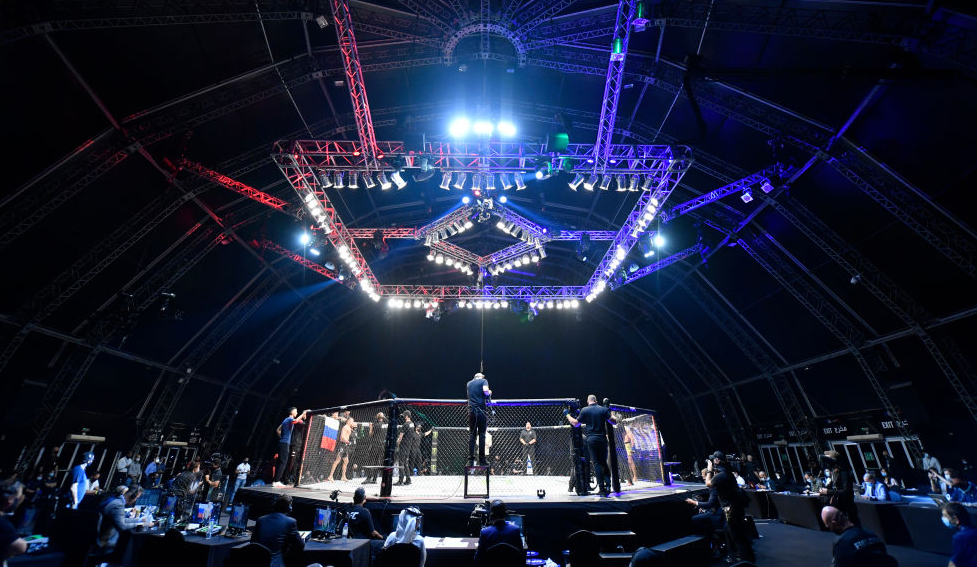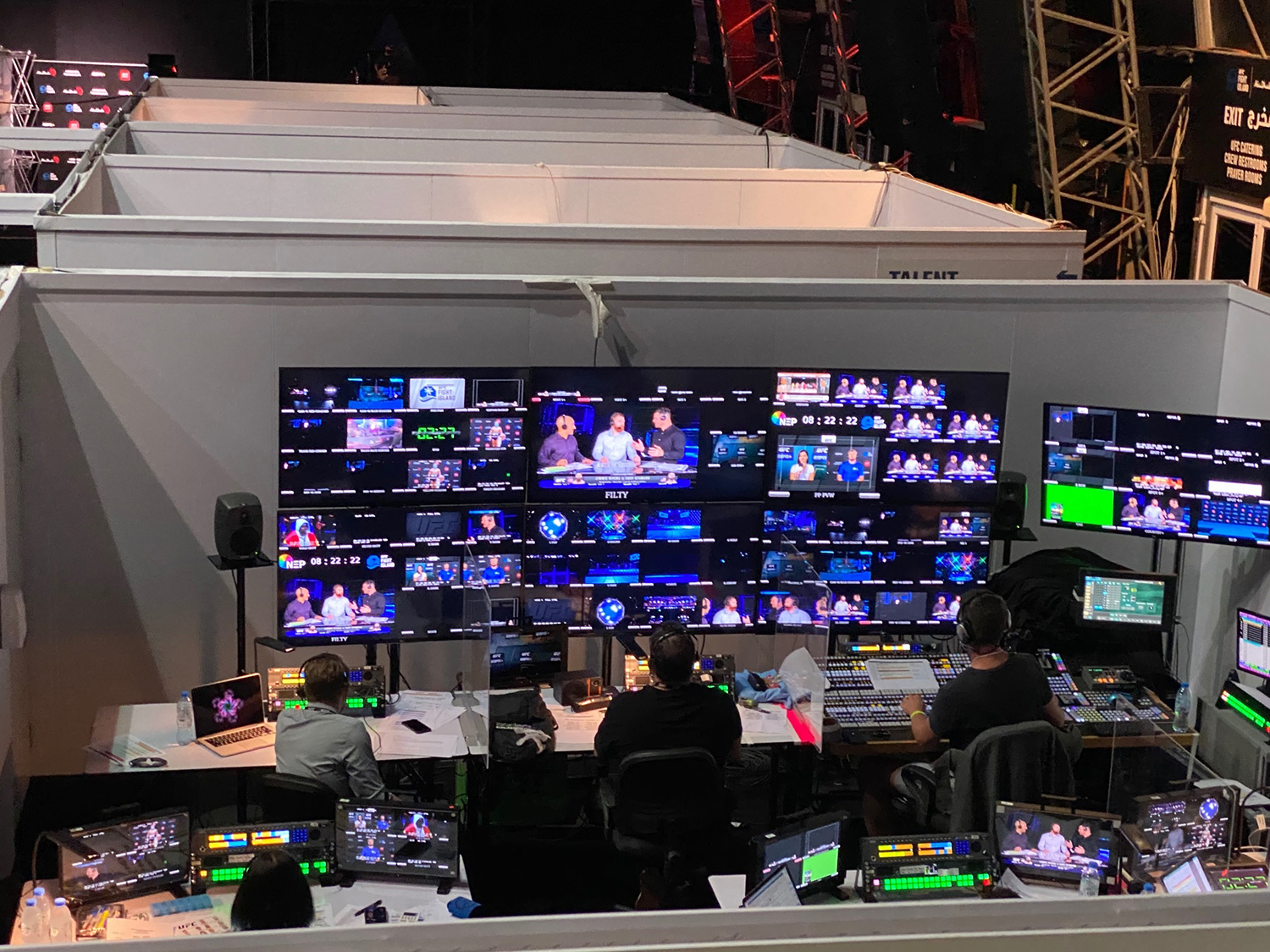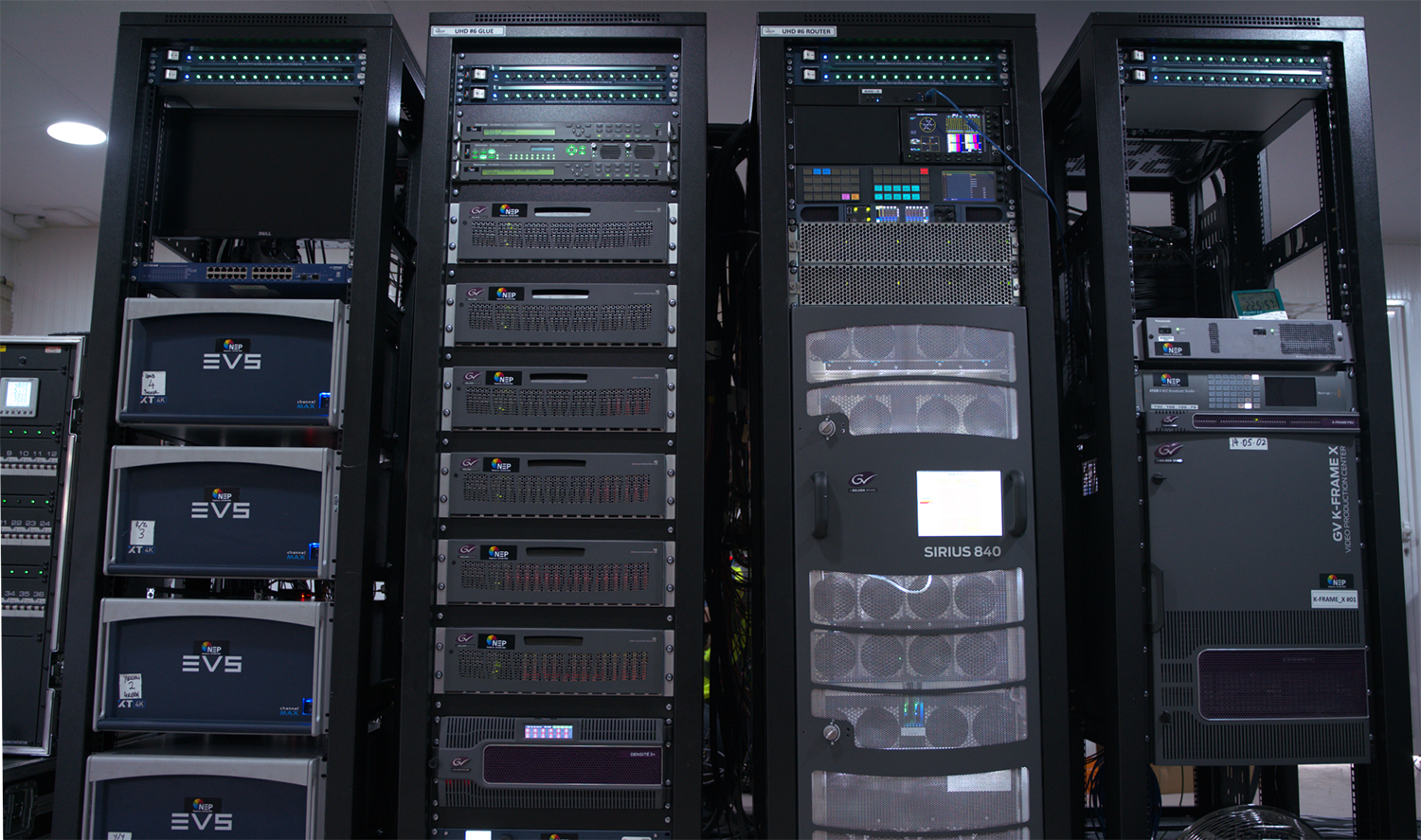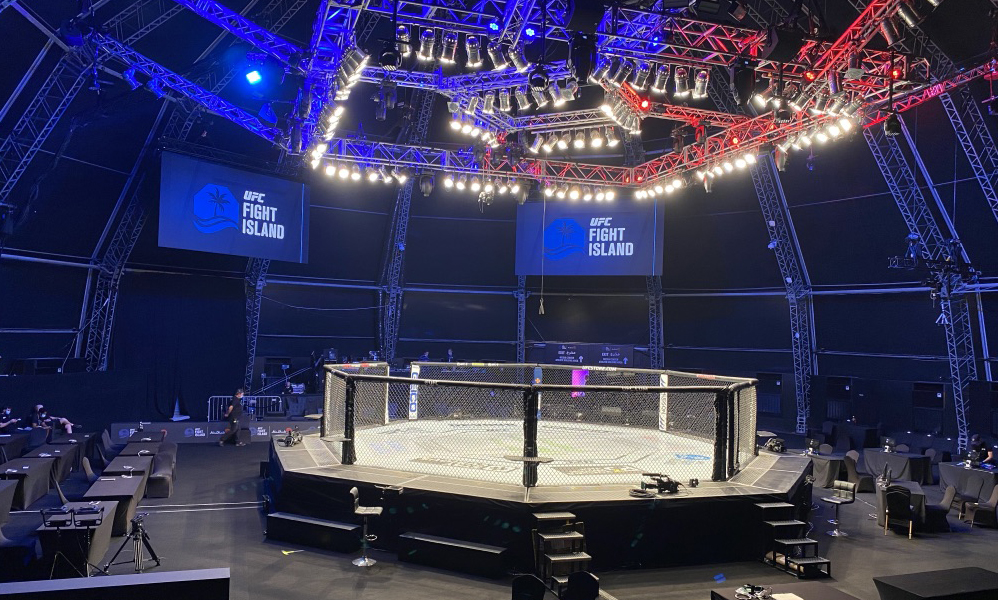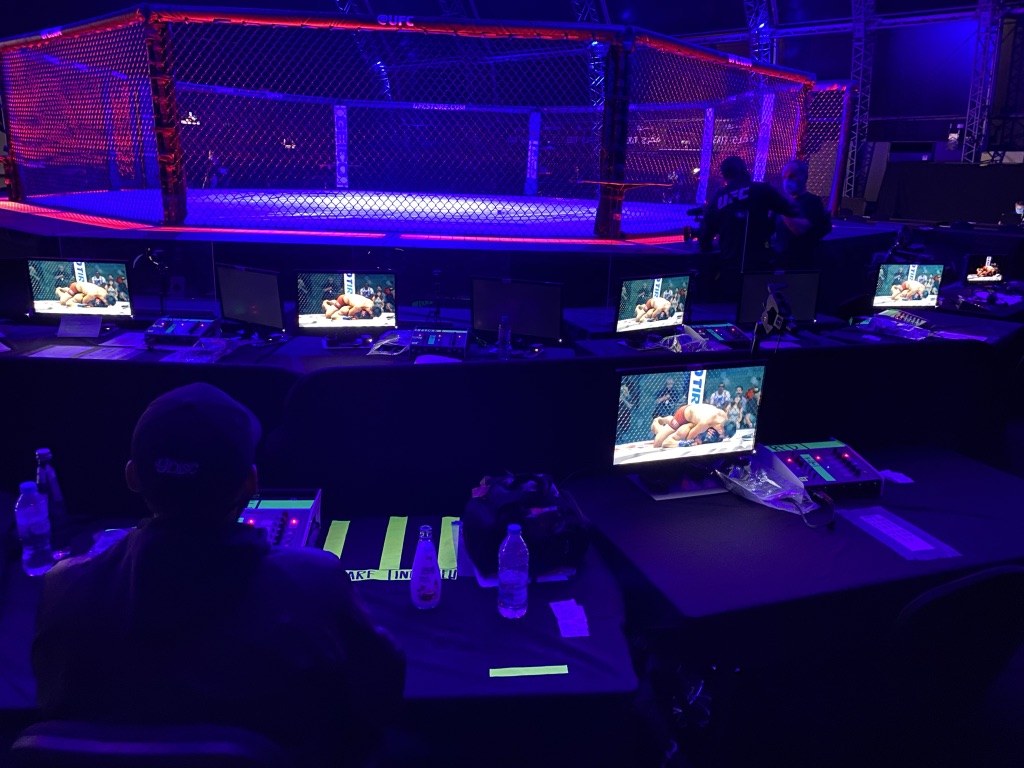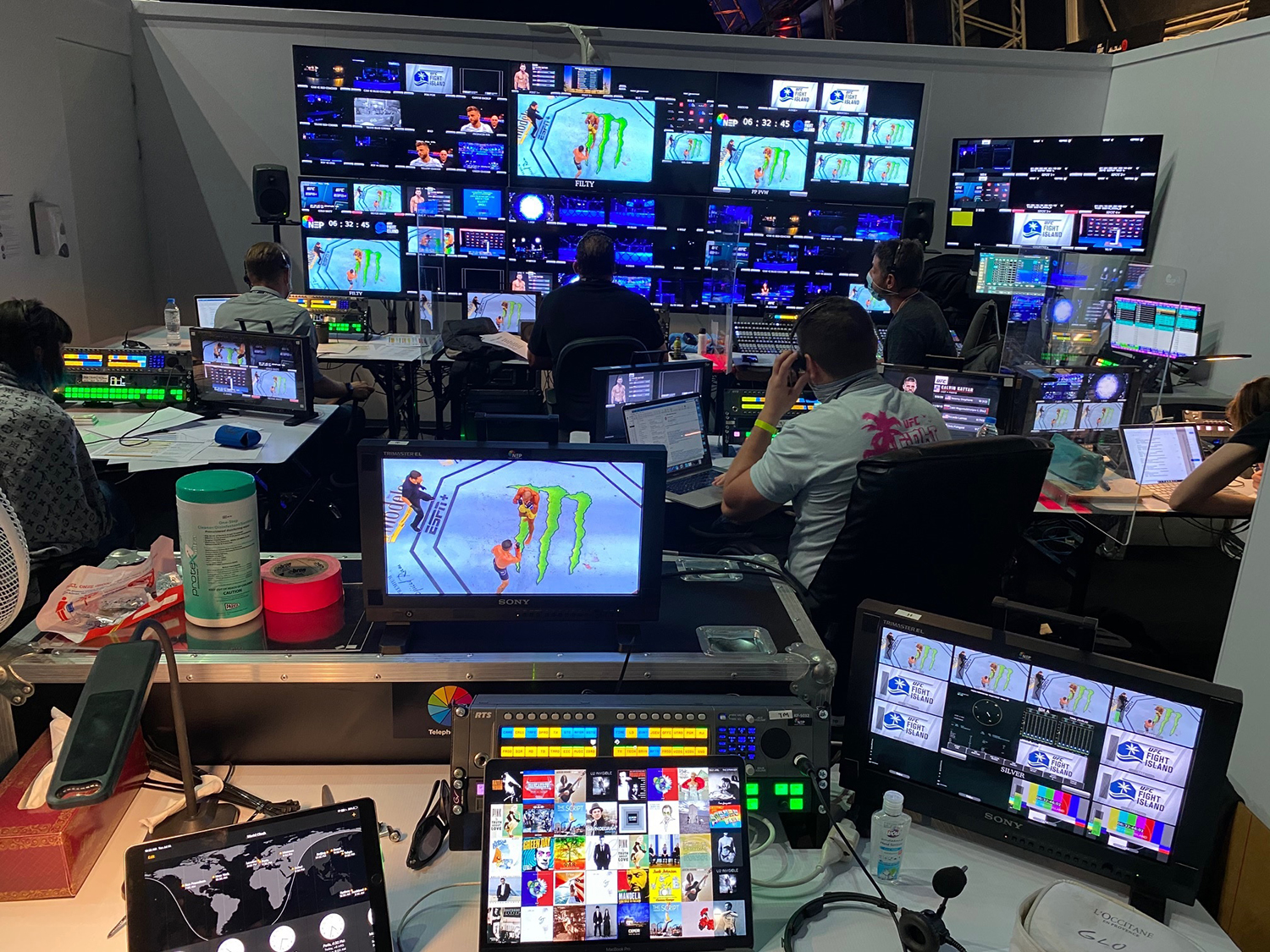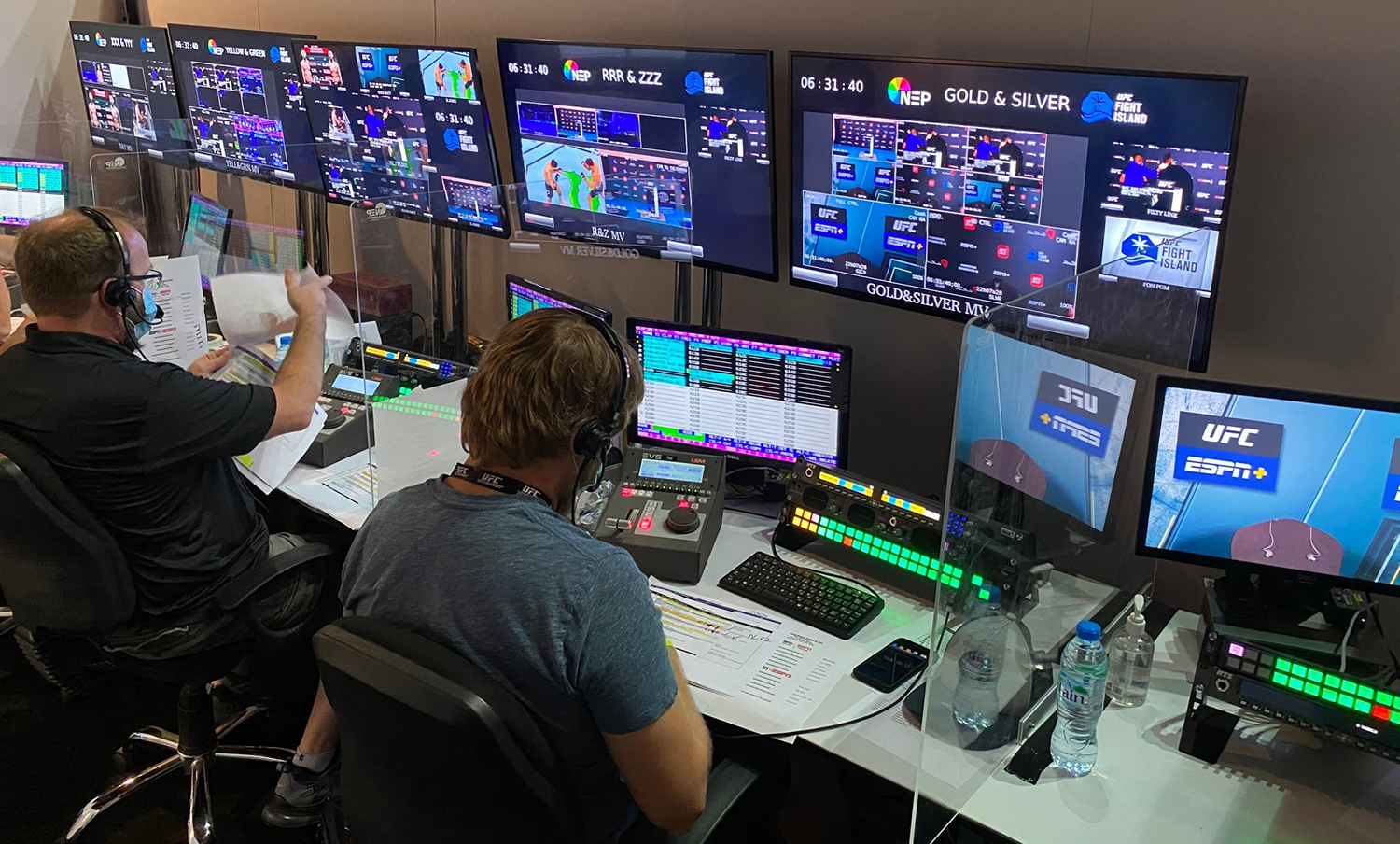UFC Creates Live-Production Ecosystem From Scratch on ‘Fight Island’ in Abu Dhabi
Broadcast operations and Octagon are in a ‘quarantine bubble’
Story Highlights
UFC’s much-hyped Fight Island officially kicked off last weekend with UFC 251, the first of four events to be held in two weeks at the one-of-a-kind compound created on Yas Island in Abu Dhabi. With a full quarantine bubble in place, UFC’s production-operations team worked with NEP to create a broadcast center from scratch inside the Flash Forum, the venue in which the fights are held.
“We’ve done fights all over the world using all kinds of different [production] facilities, but the unique aspect here is that we were able to build out our back-of-house infrastructure into portable rooms separated by solid walls here at the venue,” says Craig Borsari, EVP, operations and Production, UFC. “NEP brought in a flypack so we were able to install the equipment across this network of rooms, interface the rooms together, and essentially create a broadcast-operations center right in the venue.”
Inside the Flash Forum: BOC Springs From a Flypack
NEP Singapore provided the flypack and additional equipment to create UFC’s BOC inside the Flash Forum, which comprises a main control room and separate rooms for tape, graphics, audio, and transmission. The arena is essentially cut in half, with one half housing the Octagon and performance spaces and the other housing the production facilities and warm-up areas for fighters.
With peak temperatures breaking 100°F on a daily basis, outdoor production facilities were not an option, and keeping the sizable amount of equipment cool has proved a sizable undertaking.
“The biggest technical hurdle has been keeping the equipment in the central engineering room from NEP Singapore’s flypack at the proper temperature and climate due to the extreme heat and humidity in this part of the world,” says Tim O’Toole, senior VP, event production, UFC. “To combat this, we isolate the heat-generating equipment in separate cabins with extra air-conditioning units. We constantly monitor the rooms’ climate with both a hydrometer and multiple thermostats. The rest of the production workspaces are located in temporary, [ceiling-less] room structures inside the Fight Island venue, where there is ample AC and ventilation.”
In addition to the climate-controlled environment, the separate rooms provide a more COVID-safe environment for production teams. In addition to being separated by movable walls, all production staffers are required to wear masks, socially-distance inside the arena space, and regularly disinfect their workstations.
The Octagon: 19 Cameras for Eight-Sided MMA Action
UFC and production partner Concom have deployed 19 cameras at Fight Island, including 14 Sony HDC-4300’s (two operating in 6X slo-mo). Six cameras cover the action in the Octagon: four manned handhelds and two Talon robotic heads from Inertia Unlimited (one above the Octagon mounted on a truss in the lighting grid, one outside the Octagon mounted on a separate truss). The production team is also using one RF Steadicam and a 24-in. Jimmy Jib arm, which plays a key role in fight coverage.
“Since we don’t have fans inside the arena,” says Borsari, “we were able to bring the jib into a position that we never have used before. We put the jib in the six o’clock position, which would usually be right in the middle of the floor section of seats. That affords us the ability to get very close with the jib-arm camera head and actually cover the fights with it instead of just using it for our walkouts, wide shots, and tale-of-the-tape like we have in the past.”
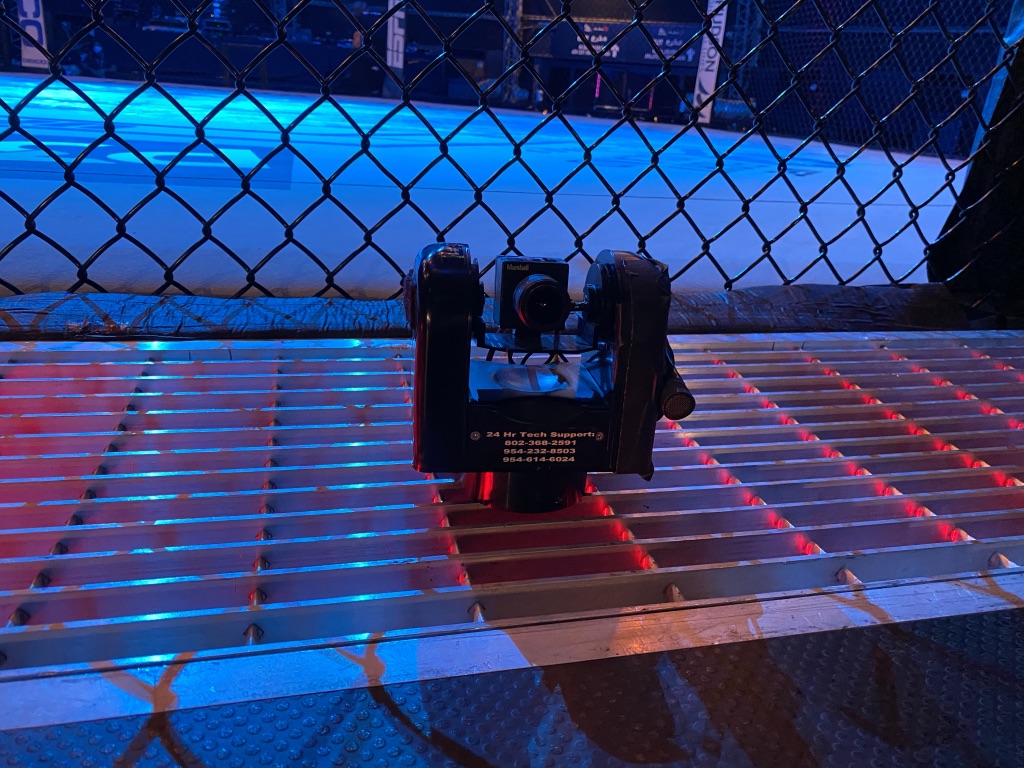
One of two BR remote robotic heads mounted outon the apron of the octagon deck to capture fighter-coach intereaction in their corners.
Outside the Octagon, there are two cameras backstage in locker rooms (one becomes the third camera for pre/post shows at the ESPN desk), two for post-show interviews (separate cameras for the reporter and fighter), and two desk cams for ESPN+ pre/post shows.
Inertia Unlimited has also supplied five Marshall CV502 POV cameras. Three are dedicated to on-air talent (so that they can maintain social distancing), and two are attached to BR Remote robotic heads mounted on the apron deck of the Octagon (pointed at fighters’ coaches to capture their instructions during the fights or their reactions for replay at the end of the fights).
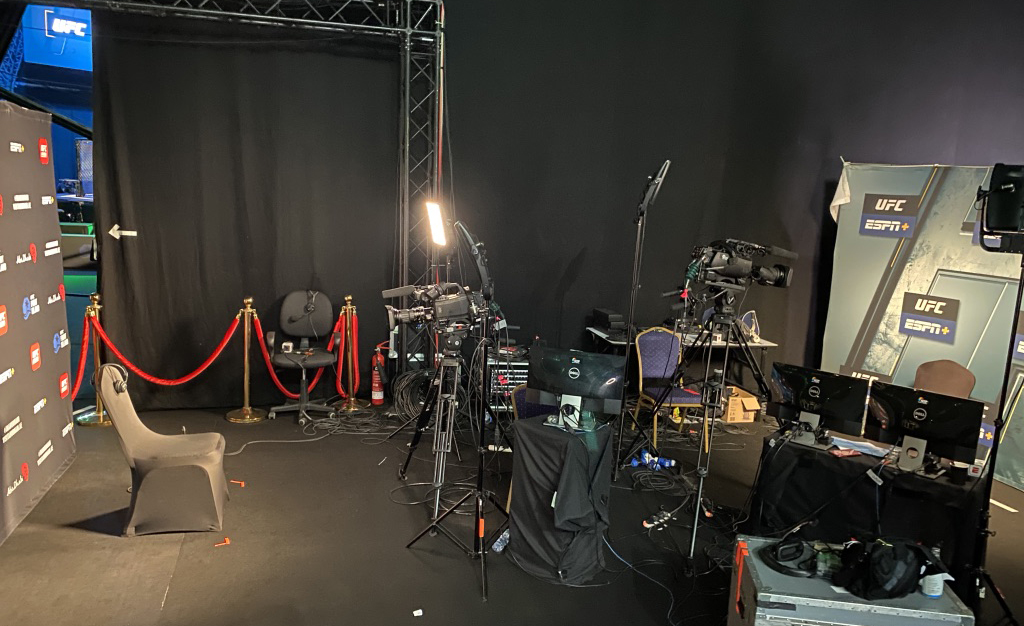
Commentators conduct interviews with fighters from a separate location inside the arena to maintain social distancing
With still no fans in the stands, UFC’s production team continues to provide viewers with an unprecedented level of audio access inside the Octagon.
Although the microphone complement remains roughly the same as for a typical UFC PPV production, the audio-production team has been able to capture nearly pristine sounds of body and head blows, fighters hitting the mat, interactions in fighters’ corners, and even dialogue between fighters.
“We’ve been extremely happy with the audio-production group,” says Borsari. “And I think our fanbase has been pleasantly surprised with just how much it enhances the experience of watching our fights. There’s no doubt that, with UFC 251, you were hearing things that you just never would hear typically during a fight of that magnitude. Instead of being in a sold-out [arena], we are in a very intimate location where you can hear audio that gives you a whole different perspective of the power of our athletes.”
In terms of on-air talent, UFC and ESPN have a pre/post-show studio desk, and announcers calling the action are positioned about 12 ft. from the edge of the Octagon (10 ft. from each other and separated by plexiglass). As was the case for post-fight interviews at UFC Apex events in Las Vegas last month, instead of standing shoulder to shoulder, the commentator and the winning fighter are in separate locations and conduct the interview via headset and are presented on-screen in a two-box format.
Getting to Abu Dhabi: Making Safety a Priority, Managing Jetlag
To safely travel the largely U.S.-based production crew of 75+ people, Borsari coordinated with the UFC event-operations team, which arranged for 11 charter flights from Las Vegas, London, Sao Paulo, and Moscow.
Each crew member was required to deliver a negative COVID-19 test 24 hours prior to boarding the charter and then was required to pass another test upon arriving at the hotel in Abu Dhabi (remaining under a 48-hour quarantine while the test was processed). Yet another test is required to be taken within 24 hours of each event.
Once an individual enters the 10-sq.-mile Fight Island quarantine zone — where all personnel and fighters are housed and the arena is located — they are not permitted to leave, and the perimeter is monitored by a strict security presence at all times. Anyone who leaves the zone must be retested and quarantine for 48 hours before reentering.
“The environment that they have created within the quarantine bubble is as safe as it possibly could be,” says Borsari. “Building the broadcast-operation center inside the arena helped us separate individuals from one another. Our first priority is keeping everyone healthy and safe, and we feel like we’ve done that.”
Transmission and Contribution: Delivering the Octagon to the Globe
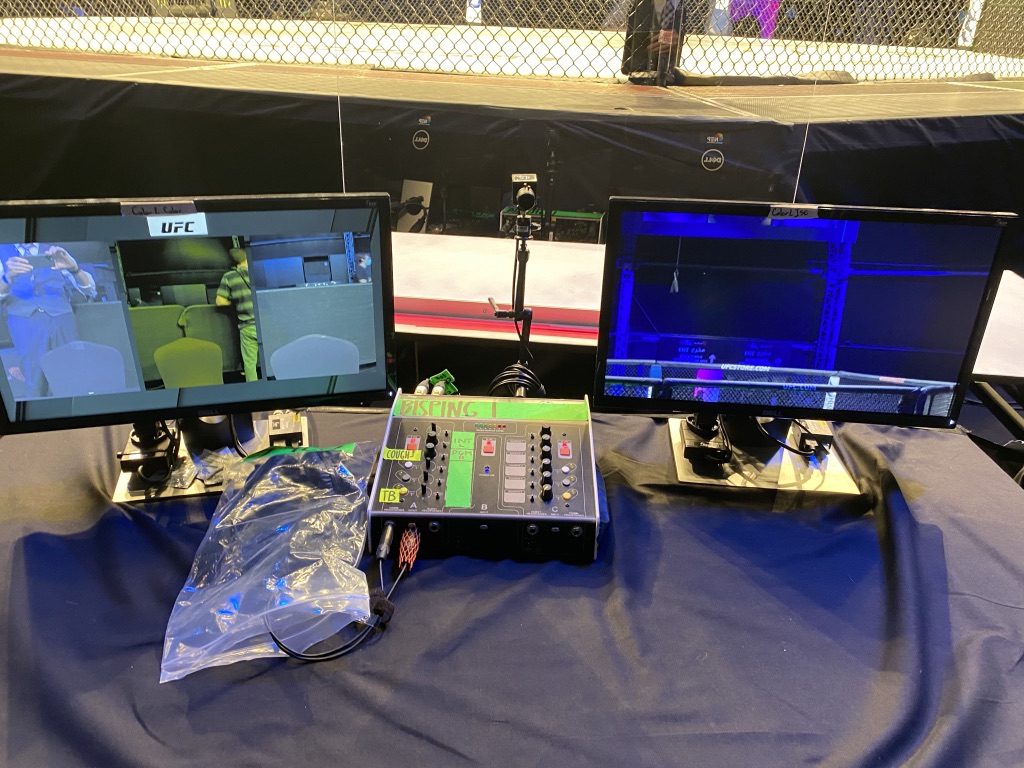 UFC has held several fights in Abu Dhabi in the past. However, establishing reliable transmission for a major PPV event is never an easy task, especially during a pandemic.
UFC has held several fights in Abu Dhabi in the past. However, establishing reliable transmission for a major PPV event is never an easy task, especially during a pandemic.
With that in mind, O’Toole and the UFC team worked with PSSI/Strategic Television (with assistance from IMG Studios at Stockley Park in London) to design an ultra-redundant transmission scheme that includes two Ku-band satellite uplink trucks, one Ku-band flyaway antenna system, and one C-band flyaway antenna system at the Flash Forum.
These four systems provide redundant satellite paths with direct line-of-sight to Eutelsat 7B and AsiaSat 5, covering all of UFC’s licensed partners in Europe and the Pacific Rim. To maintain diverse pathways, the signals are downlinked at SES in Israel, NEP Connect in the UK, and Telstra Australia for fiberoptic transport to the U.S. via the Telstra Global Media Network (GMN). SES, PSSI International Teleport, and a PSSI Live Mobile Teleport at UFC APEX uplink all feeds to North American licensees. For additional redundancy, an ASI signal has been established via IP contribution between the Fight Island and the PSSI International Teleport via the Nextologies Global IP network.
Given the reportedly massive PPV audience for UFC 251, UFC’s four-event Fight Island experiment got off to a rousing start. With two more events in Abu Dhabi over the next two weekends (following UFC 251 and a Fight Night event on July 15), Borsari and his team are looking to maintain the momentum.
“It’s incredibly rewarding because this is such a unique series of events for us,” he says. “There’s a certain energy for everybody who is involved in this event: you can truly feel it as you’re walking around within the bubble. We’re just all very proud to be part of it and proud to be able to provide some live sports content to people all over the world.”
